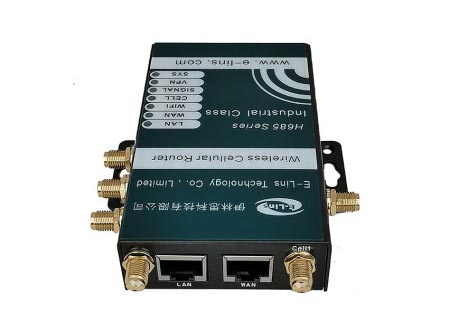Why are 5G modems so expensive?
May 27,2024 | Views: 413
5G modems are expensive due to several factors, including:
Advanced Technology and Research Costs: Developing 5G technology involves significant investment in research and development. The transition from 4G to 5G represents a major technological leap, requiring advancements in hardware, software, and network infrastructure.
Complexity and Performance Requirements: 5G modems must support higher data rates, lower latency, and more efficient use of the radio spectrum. This complexity demands sophisticated components and design, which are more costly to produce.
Cutting-Edge Components: The components used in 5G modems, such as high-frequency RF (radio frequency) components, advanced semiconductors, and antennas, are more advanced and expensive than those used in previous generations of wireless technology.
Limited Economies of Scale: As 5G is still in the rollout phase, production volumes are lower compared to mature technologies like 4G. Lower production volumes mean higher per-unit costs. As adoption increases, prices are expected to decrease.
Licensing and Intellectual Property Costs: 5G technology relies on numerous patents and intellectual properties held by various companies. Licensing these technologies adds to the overall cost of 5G modems.
Network Compatibility and Testing: Ensuring compatibility with various networks and extensive testing for reliability and performance under different conditions add to the development costs. 5G modems need to be compatible with existing 4G networks and future-proof for upcoming advancements.
Early Market Phase: Being in the early stages of deployment, manufacturers also factor in higher profit margins to recoup their initial investments more quickly. Over time, as the technology becomes more widespread and competition increases, prices are likely to drop.
These factors combined contribute to the high cost of 5G modems currently seen in the market.
Prev: Comparison between E-Lins 4g router H685 and H820
Next: Is a 5G router the same as 5G?
Advanced Technology and Research Costs: Developing 5G technology involves significant investment in research and development. The transition from 4G to 5G represents a major technological leap, requiring advancements in hardware, software, and network infrastructure.
Complexity and Performance Requirements: 5G modems must support higher data rates, lower latency, and more efficient use of the radio spectrum. This complexity demands sophisticated components and design, which are more costly to produce.
Cutting-Edge Components: The components used in 5G modems, such as high-frequency RF (radio frequency) components, advanced semiconductors, and antennas, are more advanced and expensive than those used in previous generations of wireless technology.
Limited Economies of Scale: As 5G is still in the rollout phase, production volumes are lower compared to mature technologies like 4G. Lower production volumes mean higher per-unit costs. As adoption increases, prices are expected to decrease.
Licensing and Intellectual Property Costs: 5G technology relies on numerous patents and intellectual properties held by various companies. Licensing these technologies adds to the overall cost of 5G modems.
Network Compatibility and Testing: Ensuring compatibility with various networks and extensive testing for reliability and performance under different conditions add to the development costs. 5G modems need to be compatible with existing 4G networks and future-proof for upcoming advancements.
Early Market Phase: Being in the early stages of deployment, manufacturers also factor in higher profit margins to recoup their initial investments more quickly. Over time, as the technology becomes more widespread and competition increases, prices are likely to drop.
These factors combined contribute to the high cost of 5G modems currently seen in the market.

 Networking
Networking EMBEDDED SYSTEMS
EMBEDDED SYSTEMS Switches
Switches Wireless Solutions
Wireless Solutions Industrial Computer
Industrial Computer Cloud Services
Cloud Services




